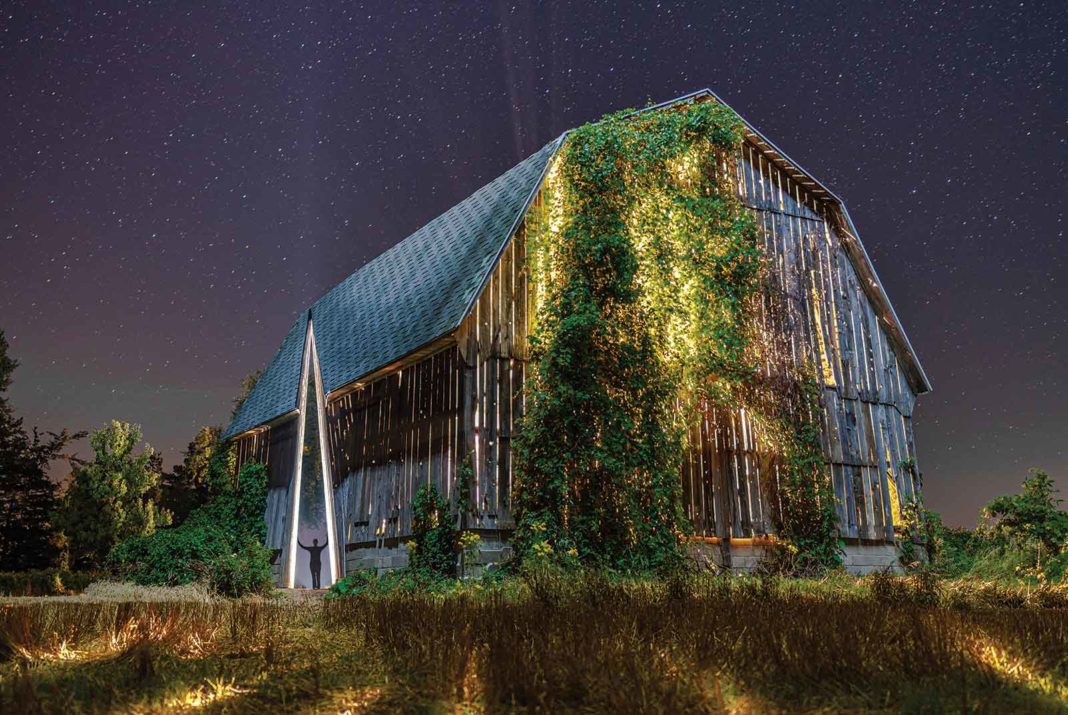An art scene is emerging in the small, waterfront town of Port Austin in Lower Michigan’s Thumb area. And it’s emerging in a way that is totally unexpected and larger than life.
While driving the meandering roads of the Thumb, you can’t help but notice the many barns peppering the landscape. Most of them look like relics from a bygone era, which in some ways they are.
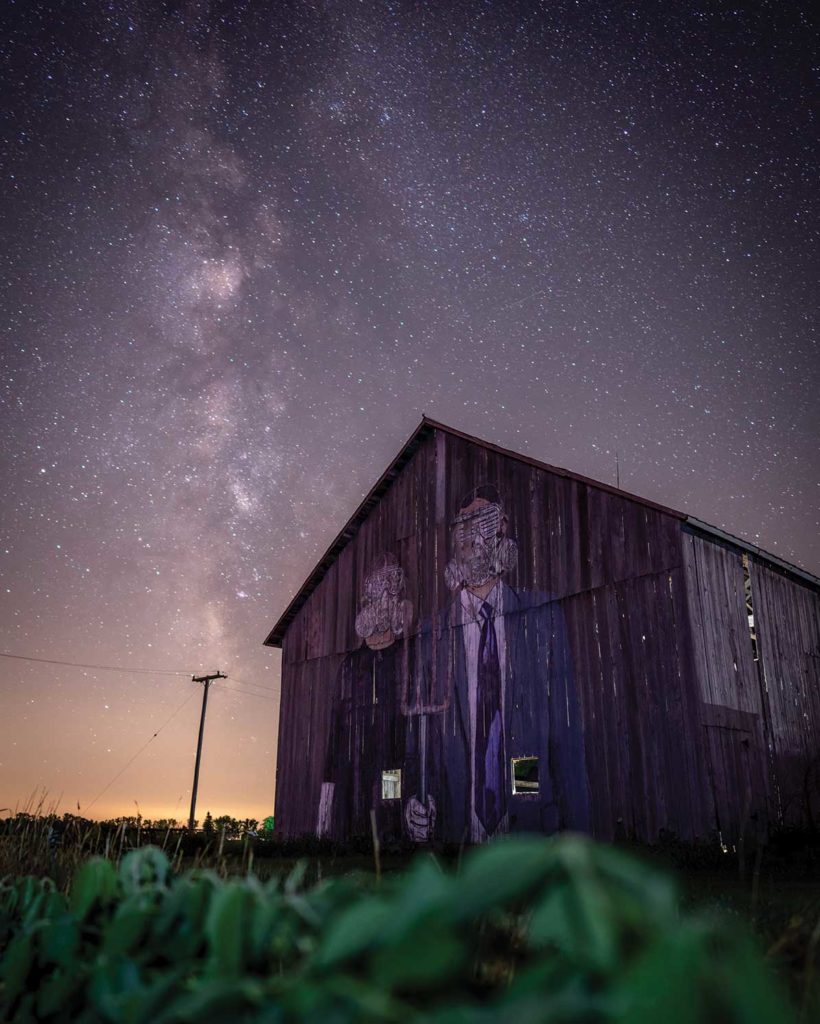
Hygienic Dress League | Steve and Dorota Coy
Photo by Tyler Leipprandt
Unlike the other installations in the project, the Ziel Barn is still a working structure. Owners Hank and Jeannette Ziel donated their barn for Hygienic Dress League (HDL) to paint. In nostalgic barn advertising style, including a take on Grant Wood’s famous ”American Gothic,” HDL created two sides of ads for an imaginary corporation that produces nothing. It is a commentary piece that sparked plenty of conversations, like any provocative art.
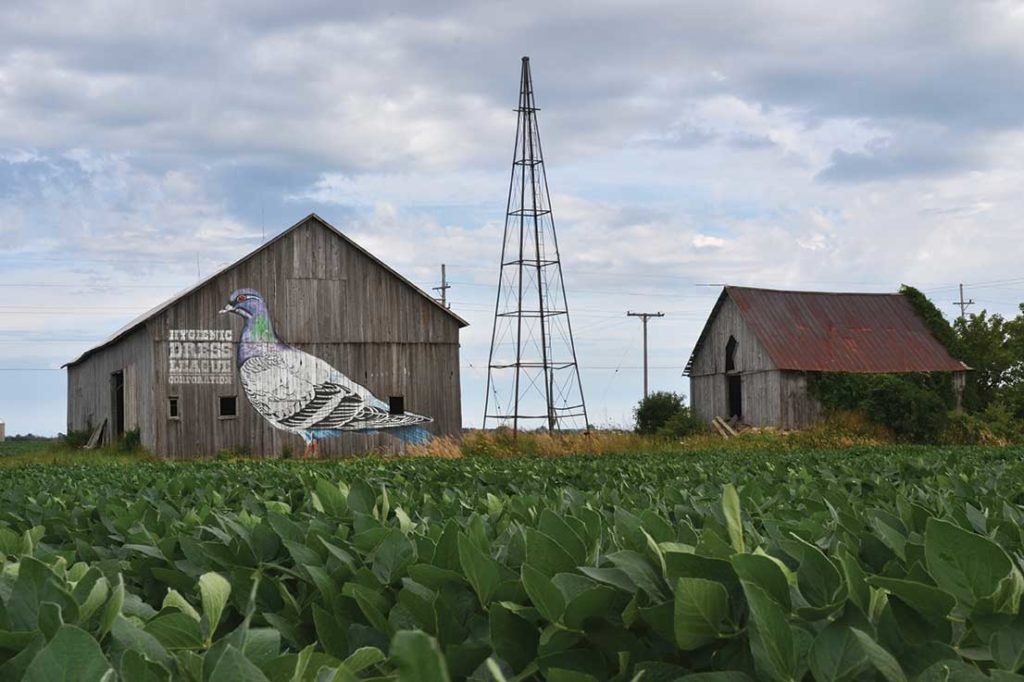
Jim Boyle, a former Port Austin resident, now works for a foundation in the Detroit area and has been deeply involved in the city’s art scene. His parents still live in the Thumb, and while visiting them years ago, he noticed the turn-of-the-century barns starting to lose in the undeclared war with nature. As the traditional family farm saw a decline, the story of struggle and hanging on by a thread, or rather a beam, was all too metaphoric in the barns. Once majestic, utilitarian structures, these barns were beginning to look all too often like abandoned dreams or livelihoods.
“You can’t help but make the connection to these beautiful barns and how just over a hundred miles away, Detroit has seen similar structural loss,” said Boyle.
As a member of the arts community, Boyle had intimate knowledge of how art has the ability to transform what might otherwise be forgotten. After 10 years with the Detroit Institute of Art and as the co-founder of a gallery—Public Pool—Boyle understood how art could help build up a community.
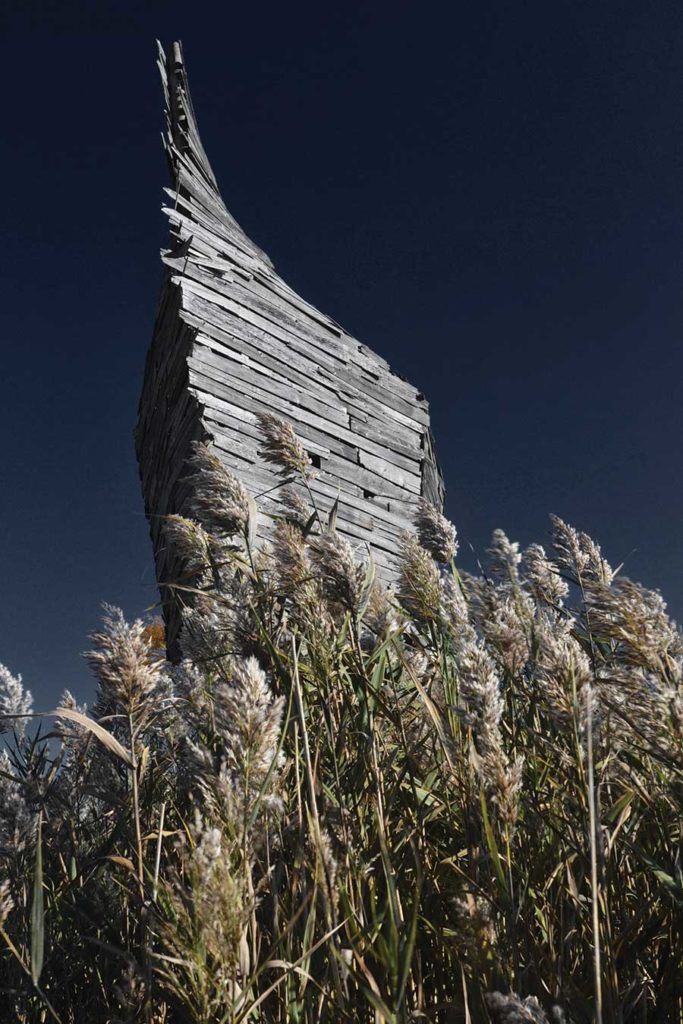
Scott Hocking
Photo by Justin Schnettler
The second barn, donated by Bill and Lorraine Goretski, was likely one big storm from coming down. Ultimately, it was the artist/storm of Scott Hocking who came in, dismantled the 1890s barn and re-raised it in a totally new form. The ship-like “ark” stands over 55 feet tall in the fields of M-53 and begs viewers to stare and ponder if anything is ever just one thing.
It started with a lofty goal—artistically modify 10 barns in the Port Austin area in 10 years. Boyle reached out to the art community in Detroit, and the farm and local community in Port Austin. He made the connections and hoped to watch the magic happen.
“Like any large installation project, it is a million moving pieces and gets away from you fast,” said Boyle.
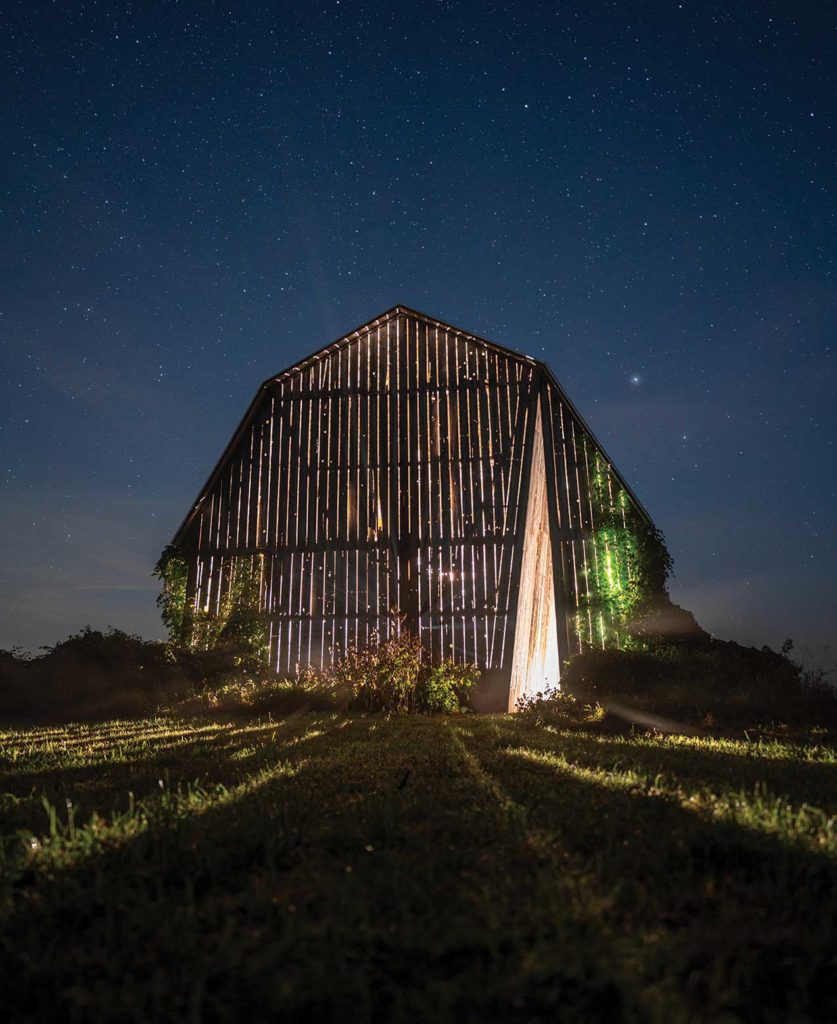
Secret Sky
Catie Newell
Photo by Tyler Leipprandt
Catie Newell is an architect by day and artist by night. She revamped her barn, donated by Michael Schoenhals, using her architectural knowledge. By creating a unique “cut-out” through the barn’s center and shoring it up with beams and tension rods, Newell essentially saved the structure, while creating an artistic peek into the soul of these architectural giants. Wonderfully complicated by day and lit majestically by night, Newell’s barn blends the practical with the magical.
The project, which started seven years ago, has artfully transformed three barns in Port Austin. While the number of projects shrunk, the scope and scale of these installations have had a big impact both in the community and on the visual landscape. Boyle urges those both local in Port Austin and beyond to take the drive and prepare to marvel.
Ultimately, Boyle notes that there is no shortage in interest from Detroit artists. With three projects to reference, Boyle hopes that the community organizers can now point to these installations to encourage additional involvement, fundraising, and more barn projects.
It’s a lofty mission with big dreams for future growth. However—for a project of this scope—“lofty” seems just about the perfect size.
For information visit portaustinart.com or facebook.com/portaustinart.

